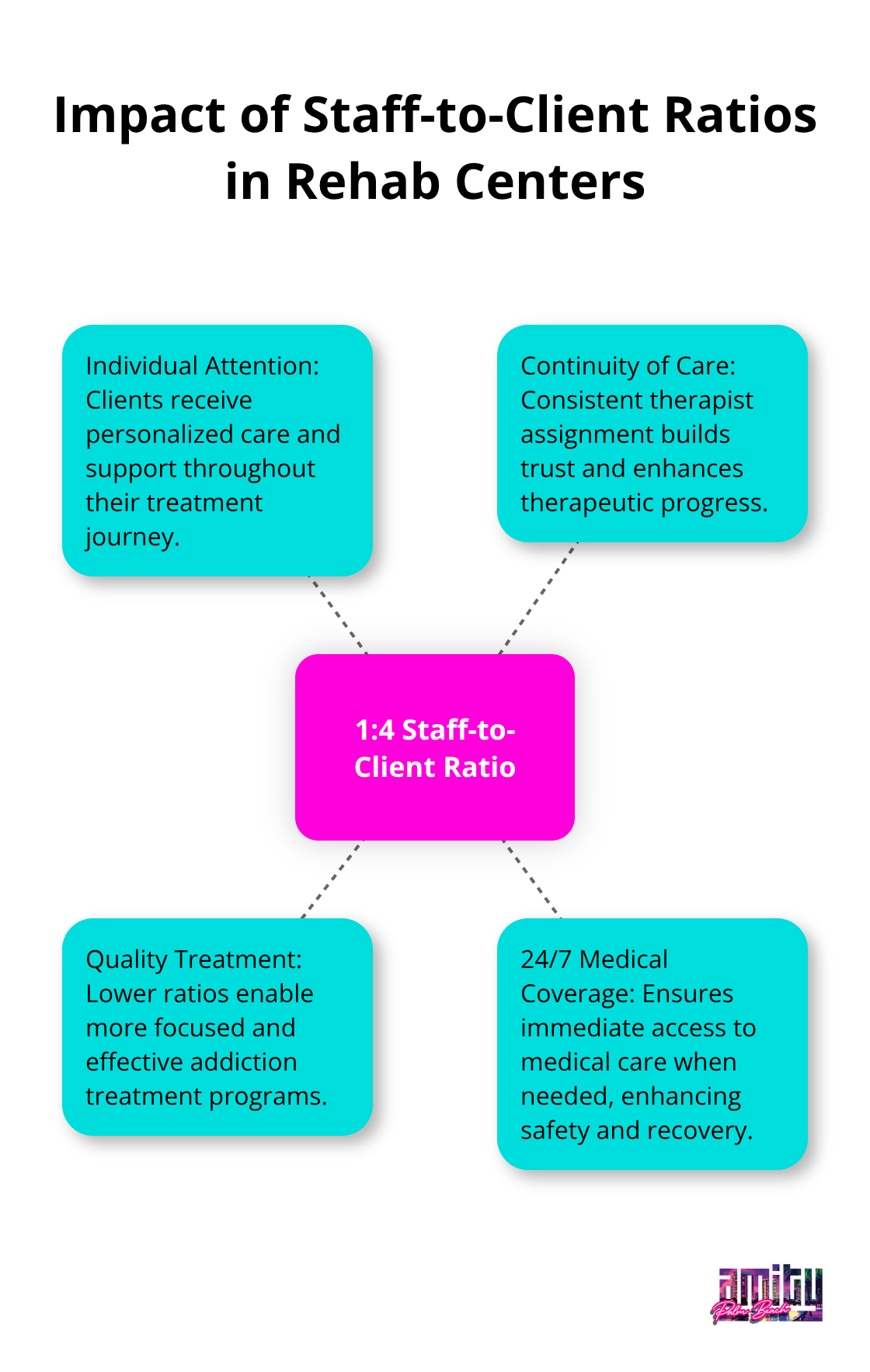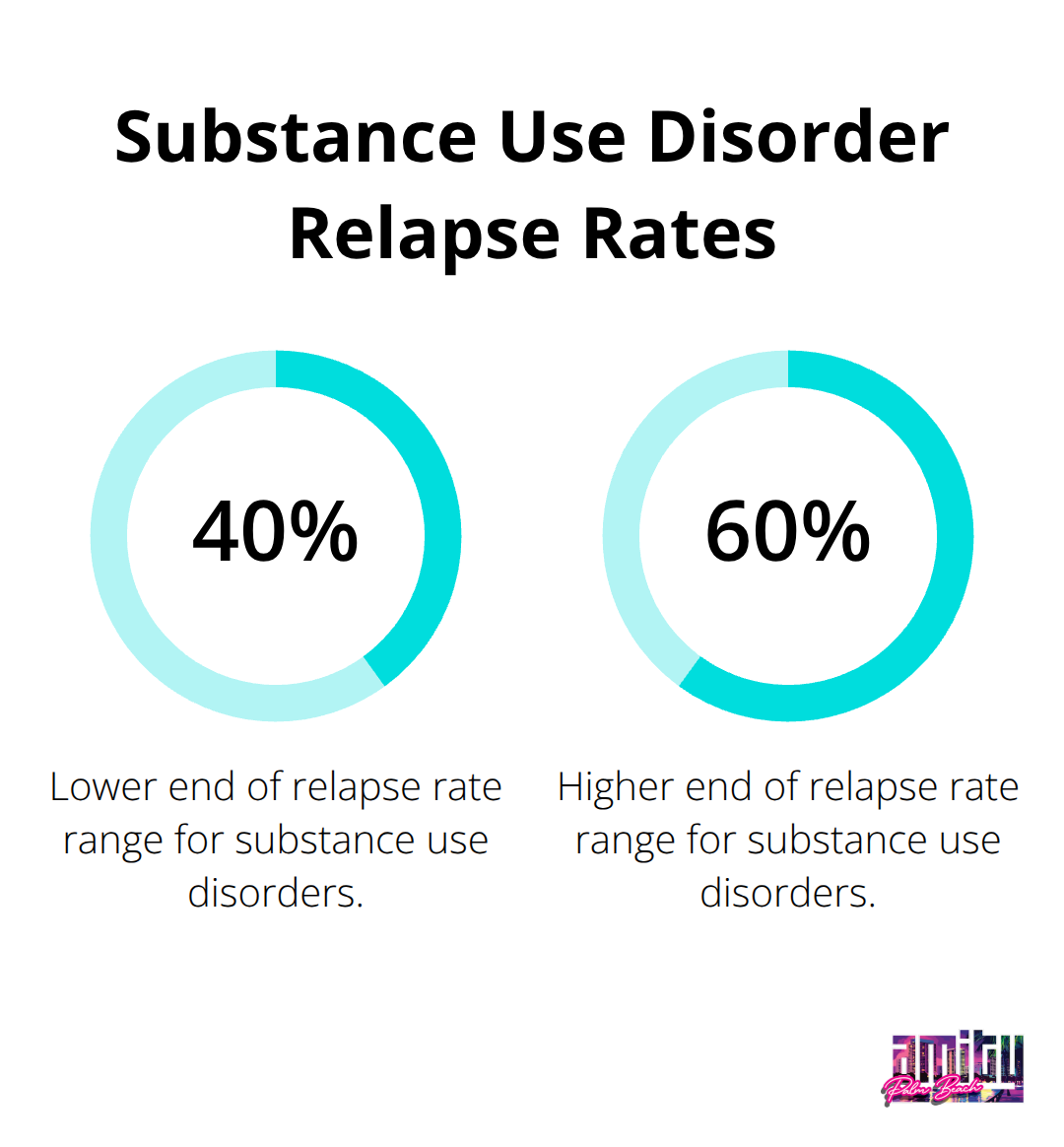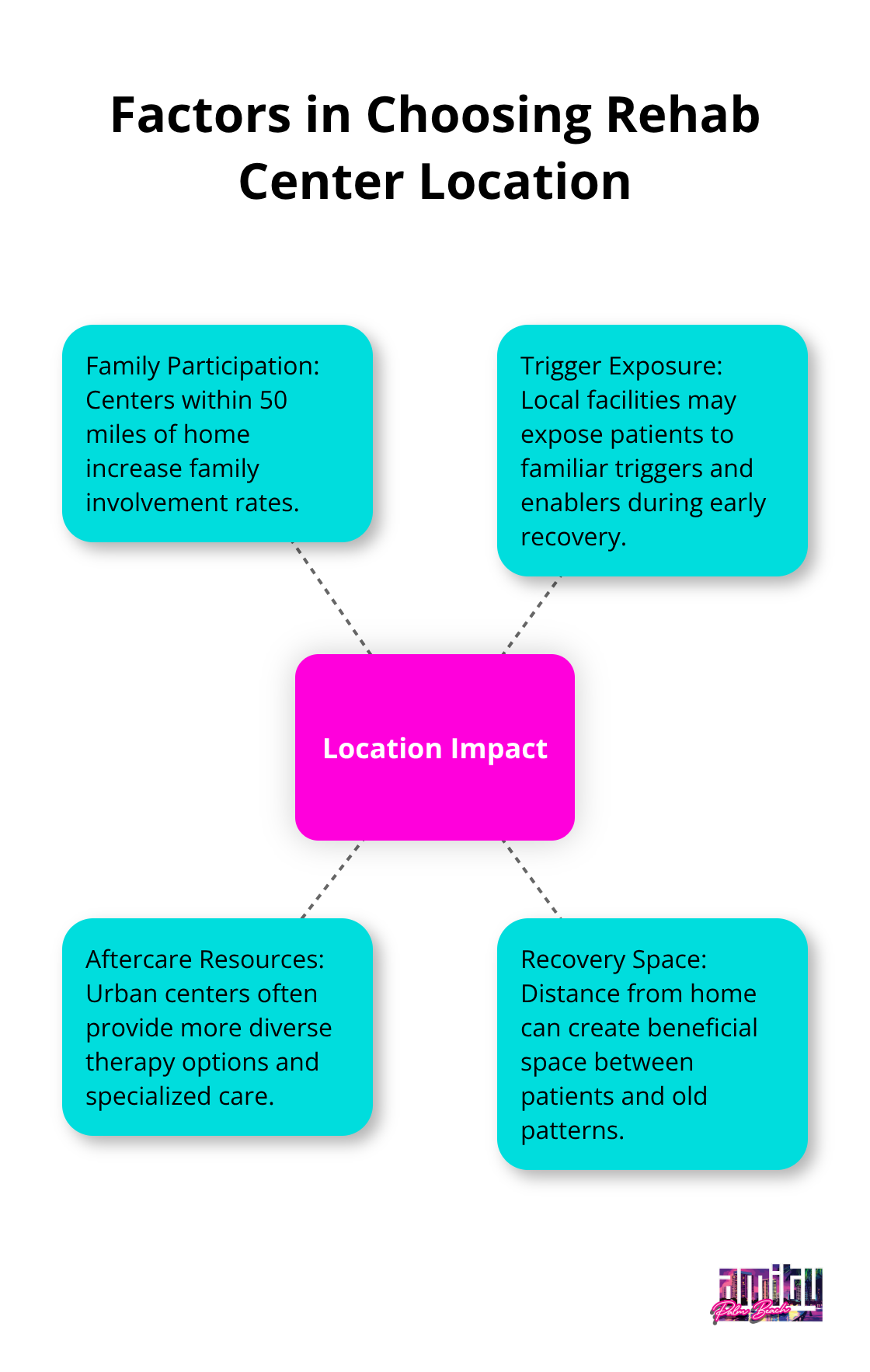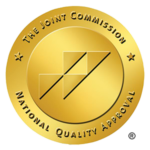Finding the best rehab centers in America can feel overwhelming when you’re ready to take that first step toward recovery. Quality treatment programs make the difference between temporary sobriety and lasting transformation.
We at Amity Palm Beach understand that choosing the right facility requires careful consideration of treatment approaches, staff expertise, and personalized care options. This guide will help you identify top-tier centers that match your specific needs and recovery goals.
What Separates Elite Rehab Centers From Average Programs
Clinical Standards That Actually Matter
The best rehab centers maintain Joint Commission accreditation, which requires rigorous clinical protocols and safety standards that many centers skip. Look for facilities where board-certified addiction medicine physicians oversee medical care, not just general practitioners. Evidence-based therapies like Cognitive Behavioral Therapy and Dialectical Behavior Therapy should form the treatment foundation, with success rates tracked and published. Centers that refuse to share outcome data hide poor results.
Dual Diagnosis Treatment Without Compromise
Many people who seek addiction treatment have co-occurring mental health disorders. Top-tier facilities staff licensed psychiatrists and clinical psychologists on-site, not just addiction counselors. Treatment plans that address both conditions simultaneously (rather than separately) reduce relapse rates significantly. Avoid centers that refer mental health issues to outside providers or treat addiction first and mental health later. This sequential approach fails because depression, anxiety, or trauma drives continued substance use.
Staff Ratios That Enable Real Care
Premium rehab centers maintain staff-to-client ratios of 1:4 or better, while average facilities often exceed 1:8. This difference determines whether you receive individual attention or assembly-line treatment. High-quality centers employ master’s-level therapists for individual sessions and maintain 24/7 medical coverage. Check if the facility assigns the same therapist throughout your stay rather than staff rotation. Continuity of care builds trust and therapeutic progress that random staff changes destroy.

Treatment Philosophy That Works
Elite centers treat addiction as a complex medical condition (not a moral failure) and design comprehensive programs accordingly. They integrate medical interventions with psychological support and holistic approaches. These facilities understand that successful recovery requires addressing physical dependence, mental health issues, and lifestyle factors simultaneously. The next step involves examining specific centers that exemplify these standards across different regions of America.
Which Regions Offer America’s Best Rehab Centers
Florida Sets the National Standard
Florida leads the nation in addiction treatment excellence, with facilities that set the gold standard for integrated care. The state combines medical detox, residential treatment, and dual diagnosis services in coastal environments that support healing. Year-round therapeutic climate and established treatment infrastructure attract top clinicians who maintain staff-to-client ratios of 1:4 or better. California follows closely with centers in Huntington Beach and San Diego that pioneer holistic approaches. These facilities integrate evidence-based therapy with wellness programs like yoga and meditation, often specializing in treatment for professionals and executives who need discreet, high-end care without compromised clinical rigor.
Treatment Hubs That Deliver Measurable Results
Arizona and Colorado have emerged as premier destinations for long-term recovery programs, with facilities that report strong outcomes according to research data. According to NIDA, relapse rates for substance use disorders range from 40% to 60%, though this risk decreases sharply over time.

Arizona centers excel at opioid addiction treatment with medication-assisted programs, while Colorado facilities focus on trauma-informed care for veterans and first responders. Texas centers concentrate on dual diagnosis treatment, with many that maintain board-certified psychiatrists on staff rather than outside consultations. The Midwest offers more affordable options without sacrificed quality, particularly Ohio and Illinois facilities that accept most major insurance plans while they maintain Joint Commission accreditation standards.
Geographic Factors That Shape Treatment Outcomes
Location proximity to major metropolitan areas often correlates with better post-treatment support networks, but rural centers provide fewer distractions during early recovery phases. East Coast facilities typically cost 20-30% more than Midwest alternatives, though insurance coverage rates remain similar at approximately 80% for in-network providers. The Northeast Region has gained recognition for excellence in physical rehabilitation services, while Southern treatment centers show strong outcomes for alcohol addiction specifically, with many that incorporate 12-step program integration as a core treatment component rather than an optional add-on.
The quality of care varies significantly between regions, but success depends more on specific facility standards than geographic location. Your next step involves evaluating individual centers based on treatment approaches, financial considerations, and personal recovery needs. For comprehensive addiction treatment options, consider facilities that offer evidence-based approaches tailored to your specific needs.
How Do You Pick the Right Rehab Center
Success Rates Tell the Real Story
Demand specific outcome data from any center you consider. Top facilities track 30-day, 90-day, and one-year sobriety rates and share this information openly. Research shows that treatment completion is associated with reduced relapse rates and drug use over time, but individual centers vary dramatically. Ask for completion rates, not just admission numbers. Centers with 85% completion rates and published follow-up data demonstrate accountability. Avoid facilities that claim proprietary success metrics or refuse to provide concrete numbers. Request references from recent graduates and verify their experiences independently.
Insurance Coverage Requires Strategic Planning
Most major insurance plans provide coverage for treatment costs, but coverage limits and pre-authorization requirements create financial traps. Call your insurance provider directly to verify benefits before facility consultations. Out-of-network centers often cost $30,000-$80,000 for 30-day programs, while in-network facilities typically require $2,000-$8,000 in out-of-pocket expenses. Medicare and Medicaid acceptance varies widely (with only 60% of premium centers accepting government insurance). Private pay options start around $10,000 monthly for basic residential care. Get written cost estimates that include medical fees, therapy sessions, and aftercare plans to avoid surprise charges.
Location Distance Affects Recovery Outcomes
Treatment centers within 50 miles of home increase family participation rates, according to research. However, local facilities expose you to familiar triggers and enablers during early recovery phases. Consider travel costs for family visits and post-treatment support network accessibility. Urban centers provide more diverse therapy options and specialized dual diagnosis care, while rural facilities offer fewer distractions but limited aftercare resources. Distance from home creates space between you and old patterns (which often supports long-term recovery success).

Treatment Philosophy Alignment Matters
Centers that treat addiction as a medical condition rather than a moral failure design comprehensive programs accordingly. They integrate medical interventions with psychological support and holistic approaches. These facilities understand that successful recovery requires addressing physical dependence, mental health issues, and lifestyle factors simultaneously. Ask about their approach to medication-assisted treatment and dual diagnosis care. Facilities that stigmatize MAT or treat mental health as secondary to addiction treatment often produce poor outcomes.
Final Thoughts
You must evaluate clinical standards, staff ratios, and evidence-based treatment approaches when you select the best rehab centers in America. Joint Commission accreditation, dual diagnosis capabilities, and published success rates separate elite facilities from average programs. Geographic location affects costs and family involvement, but quality care exists nationwide.
Insurance coverage varies significantly between in-network and out-of-network providers, with costs that range from $2,000 to $80,000 depending on your plan and facility choice. Professional support makes the recovery journey manageable when you take that first step with courage. The right treatment center provides not just sobriety, but the tools and support systems you need for lasting transformation.
We at Amity Palm Beach provide medically supervised detox, residential treatment, and dual diagnosis care in coastal environments that support healing. Our approach addresses addiction as a complex medical condition (with personalized care that combines clinical excellence with compassionate support). Recovery becomes possible when you choose facilities that offer addiction treatment programs designed for your specific needs and circumstances.




